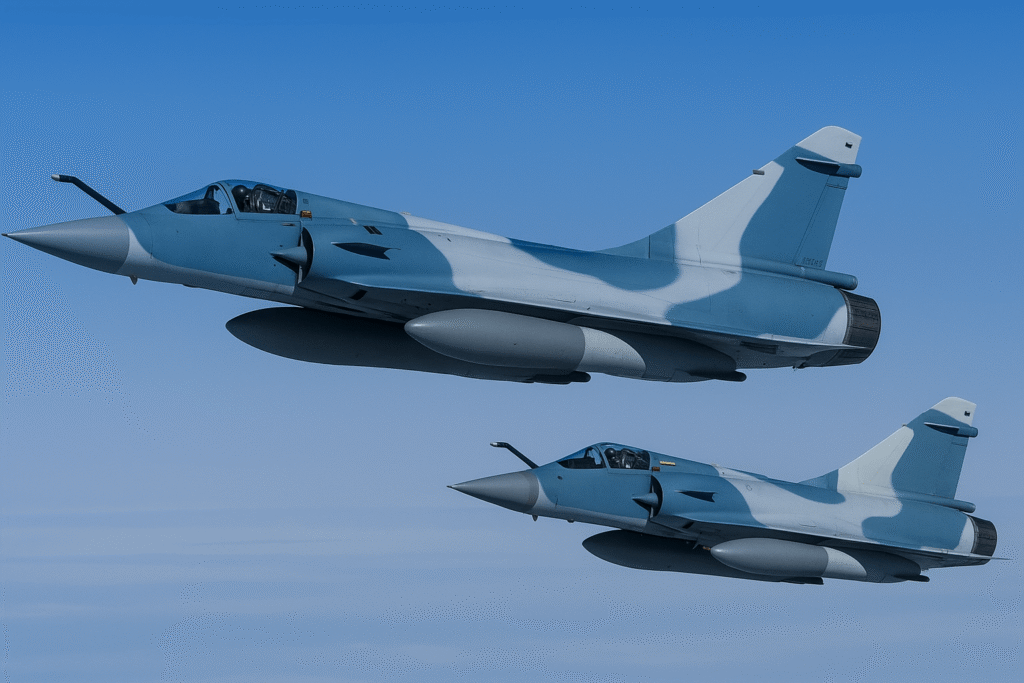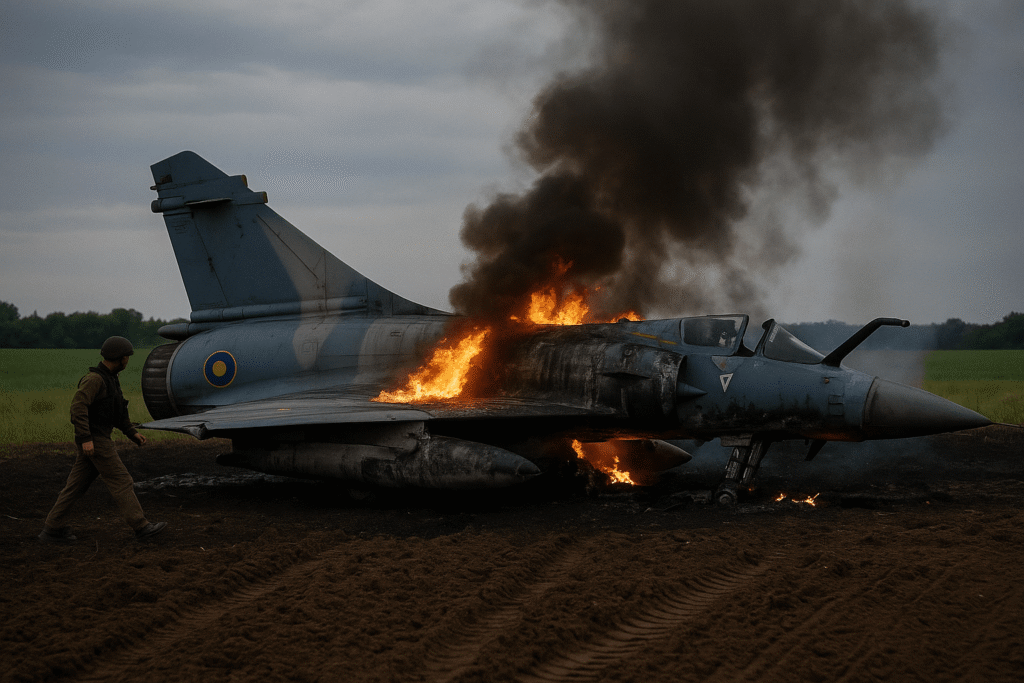
Ukraine has suffered a significant setback in its modern air defense campaign after a military aircraft crash resulted in the loss of a French Mirage 2000-5 fighter jet, one of only six recently delivered by France to bolster Kyiv’s aerial capabilities.
The aircraft went down on the evening of July 22 near Ukraine’s northwestern Volyn region, with Ukrainian defense officials confirming the incident stemmed from a technical malfunction, not hostile engagement. The pilot ejected safely, and no civilian injuries were reported on the ground.
A Critical Blow to Ukraine’s Advanced Fleet
This Ukraine fighter jet crash is the first involving a Western-supplied Mirage aircraft since the war began and marks a sobering moment for Ukrainian forces relying heavily on modern fighter technology to counter Russia’s continued air superiority.
President Volodymyr Zelensky, in a televised address, clarified that the military aircraft crash was not a result of Russian missile fire or air combat but instead due to an equipment failure. “Our pilot acted with courage and precision, ensuring the safety of both himself and the civilian population,” Zelensky said. “This was a failure of the machine, not the mission.”
The Mirage 2000 crash is particularly notable because the fighter jets were part of a landmark agreement between France and Ukraine. The first aircraft arrived in February 2025 after undergoing extensive upgrades, and they were hailed as a leap forward in Ukraine’s ability to conduct long-range precision strikes and intercept enemy aircraft.
French Military Jet Loss Raises Concerns About Technical Reliability

While this incident did not lead to any casualties, it has triggered concern over the technical readiness and long-term reliability of retrofitted Western aircraft. The Mirage 2000-5, though still highly capable, is not a brand-new platform. Originally developed by Dassault Aviation in the 1980s, many of the airframes now in Ukraine’s possession were modernized prior to delivery—but such incidents cast doubt on how well these complex systems integrate into Ukraine’s current infrastructure.
The Ukrainian Ministry of Defense has launched a full investigation, with support from French defense experts, to determine the precise cause of the fighter jet technical failure. Initial reports suggest a malfunction in the jet’s flight control system, though no final conclusions have been released.
Why the Mirage Matters: military aircraft crash
The loss of a Mirage 2000 represents more than a single-plane incident—it is a strategic and symbolic setback. These aircraft are equipped to carry SCALP/Storm Shadow cruise missiles, providing Ukraine with deep-strike capabilities far beyond the front lines. Unlike the U.S.-supplied F-16s, which are more versatile, the Mirage jets are optimized for air dominance and high-precision bombing runs.
Following this French military jet loss, Ukraine’s Mirage fleet is now reduced to five operational units. While it still possesses over 50 F-16s, four of those have already been lost in combat or through mechanical issues, with several of those crashes resulting in pilot fatalities. The attrition rate underscores the challenges Ukraine faces in maintaining a sustainable and effective air fleet during prolonged conflict.
Western Fighter Jet Support Under Pressure
Ukraine’s Western allies continue to provide military assistance, but the road ahead is fraught with logistical hurdles. Fighter jets require not just delivery, but extensive training, spare parts, runway compatibility, and long-term maintenance support. Each Western fighter jet support commitment comes with timelines and conditions that can limit rapid replacement in the event of losses.
This latest military aircraft crash may intensify Kyiv’s appeals for additional fourth-generation aircraft—including potential requests for French Rafales, more Mirages, or expedited F-16 transfers from partner nations. Ukrainian officials have already begun internal discussions on how to diversify and reinforce their air power amid these losses.
Looking Ahead: Reinforcing Reliability and Training
In the immediate aftermath of the crash, Ukrainian defense authorities, alongside their French counterparts, have signaled a renewed focus on maintenance protocols, spare parts logistics, and flight crew retraining. As Ukraine’s aerial battlefield becomes more complex—with drone swarms, electronic warfare, and hybrid air-ground threats ensuring mechanical reliability will be just as important as having advanced technology.
Ukraine’s Defense Minister, Rustem Umerov, stated that the loss is “regrettable but instructive,” noting that lessons from the incident will feed directly into ongoing training and aircraft inspection programs. “We are not just fighting with equipment we are fighting with resilience, adaptability, and data,” Umerov said.
Global Implications: military aircraft crash
This Ukrainian air force news is already resonating beyond the region. Military analysts believe the crash could influence Western defense policies, prompting countries to reevaluate the age and condition of aircraft sent to active warzones. It may also spark debates around how to accelerate the transition to fifth-generation airframes or drone-fighter hybrids for nations like Ukraine.
While the Mirage 2000 crash is not expected to alter the overall trajectory of Western military aid, it reinforces the urgency of comprehensive support including after-delivery service, pilot training, and mission-ready retrofitting.
